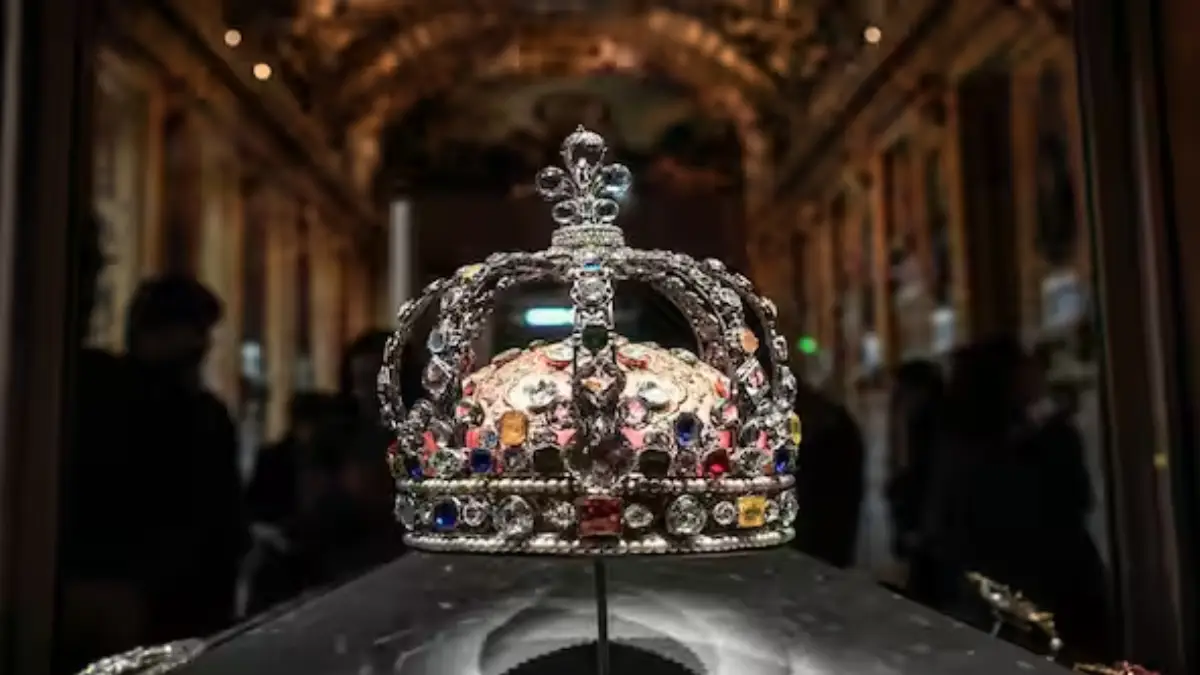Three days after one of the boldest museum robberies in modern history, French authorities remain on the hunt for a gang that pulled off a high-speed heist at Paris’s Louvre Museum escaping on scooters with eight priceless crown jewels. Valued at more than $100 million, the theft has shaken France’s cultural circles. Paris prosecutor Laure Beccuau said the Louvre curator estimated damages at €88 million (about $102 million), calling the loss “a blow to France’s historical heritage.”
But what intrigued investigators most is what the thieves didn’t steal a legendary gem worth roughly $60 million, known as the Regent Diamond, which has deep roots in India’s history and a reputation for misfortune.
The Audacious Louvre Heist
On October 19, four masked robbers broke into the Louvre and completed their theft within eight minutes, seizing eight royal pieces dating back to the 19th century. The stolen items include Empress Eugénie’s pearl diadem embedded with 1,998 diamonds and 212 pearls, an ornate diamond brooch, emerald-and-diamond jewelry once gifted by Napoleon Bonaparte to his wife Marie-Louise, and parts of two sapphire sets from French royalty.
Also read: Thieves Swipe Napoleonic Treasures in Lightning-Fast Louvre Break-In
All of the gems are considered “invaluable heritage assets,” according to France’s cultural ministry. Authorities fear the pieces may never be recovered if the perpetrators attempt to melt them down.
The Mysterious Omission – The Untouched Regent Diamond
Curiously, the thieves left behind one of the Louvre’s rarest treasures the 140.6-carat Regent Diamond. “I don’t have an explanation for that,” prosecutor Beccuau told Reuters. “Only when the suspects are caught will we understand what kind of plan they had and why that case was left untouched.”
The massive gem originates from India’s Golconda region, specifically the Kollur mine in what is now Andhra Pradesh. As folklore goes, a slave discovered the uncut 410-carat diamond and hid it inside a wound on his leg. Hoping to sell it in Madras (now Chennai), he entrusted an English sea captain to help him escape only to be betrayed and killed. The captain took the diamond, marking the first of many grim fates linked to the stone.
The diamond later reached England, was cut into smaller pieces, and sold to Philippe II, the regent of King Louis XV giving it its name, the Regent Diamond. It was later set in the crowns of French kings and even adorned Napoleon Bonaparte’s sword.
The Diamond’s ‘Curse’ and Its Indian Legacy
Over the centuries, the Regent has earned a notorious reputation as a “cursed” gem. Those who possessed it often met tragic fates from its enslaved discoverer’s murder, to the executions of King Louis XVI and Marie Antoinette, and Napoleon’s eventual exile and lonely death on St. Helena.
Perhaps aware of its ominous past, the Louvre thieves left the diamond untouched.
India’s Hidden Presence in France’s Treasure Vaults
The heist has drawn renewed attention to the Indian origins of many precious stones housed in France’s national collections. Along with the Regent, the famous Hortensia Diamond and the Sancy Diamond both sourced from India’s Golconda mines remain on display at the Louvre.
The Hortensia, with its distinctive pink tint, dates back to the reign of Louis XIV and also survived Sunday’s theft. The 55.2-carat Sancy Diamond, another Indian gem, once passed through the hands of French monarchs before reaching the Louvre.
However, not all Indian-linked gems were spared. Reports suggest that some diamonds within the stolen emerald and sapphire sets also trace their origins back to India, including elements from the historic Mazarin collection.
As investigations continue, French authorities remain hopeful the jewels can be recovered — but the untouched Regent Diamond’s eerie legend has ensured that one piece of history remains safe, if still surrounded by mystery.
